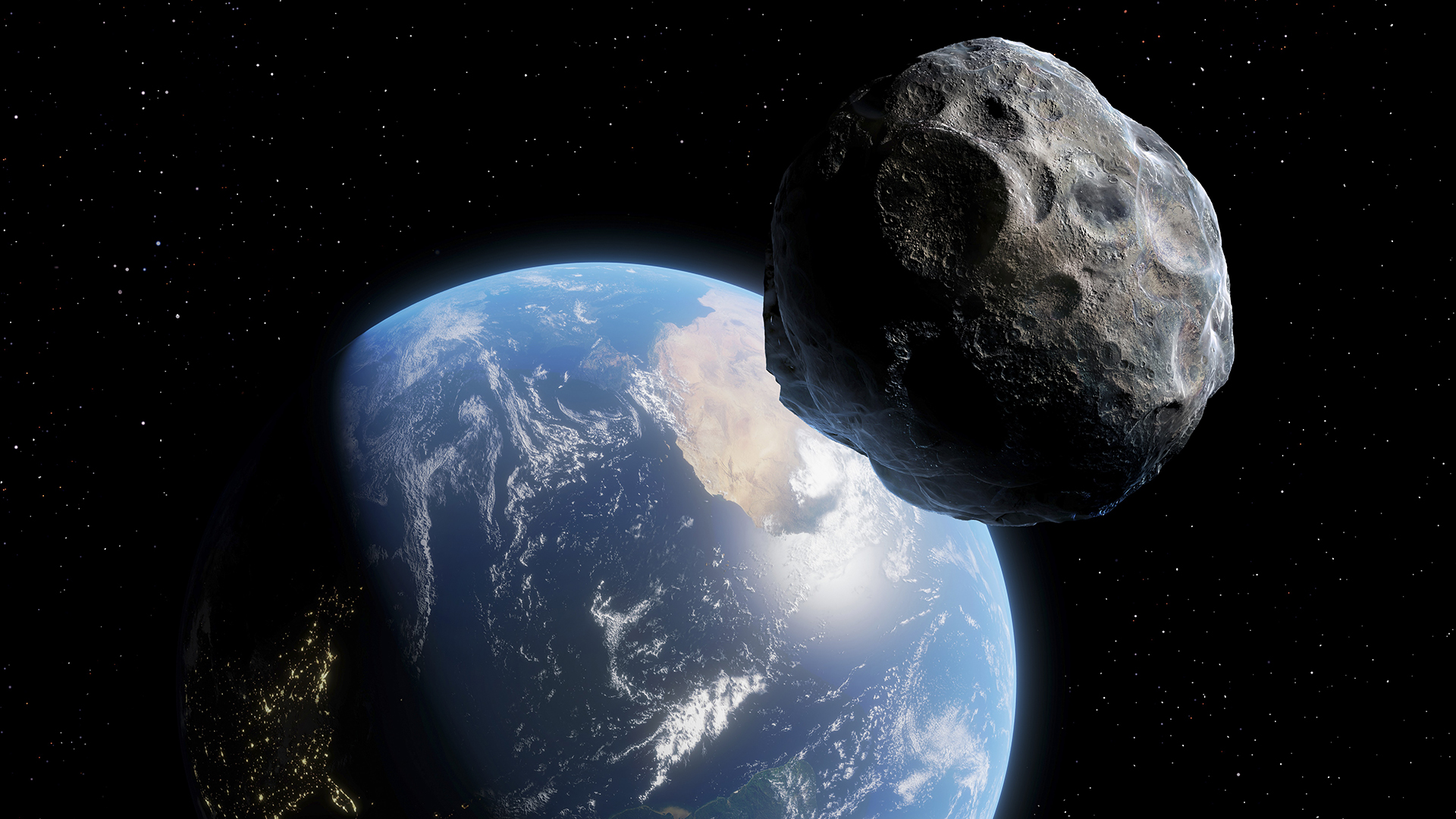'Potentially hazardous' Apollo-class asteroid sails harmlessly past Earth
Asteroid 2007 FF1 just whizzed by at 29,800 mph (47,950 km/h)

A space rock the size of a skyscraper that scientists deemed "potentially hazardous" sailed harmlessly past Earth today (April 1) around 4:35 p.m. ET.
Even though the asteroid only flew within roughly 4.6 million miles (7.4 million km) of Earth (or — about 30 times the average distance between Earth and the moon), this was still the rock's closest approach to our planet since the asteroid's discovery in 2007, according to SpaceReference.org, a database that compiles information from NASA's Jet Propulsion Laboratory in California and the International Astronomical Union.
The asteroid — named 2007 FF1 — is an Apollo-class asteroid, which means it orbits the sun and crosses the path of Earth's orbit, Live Science previously reported. (Astronomers know of about 15,000 such asteroids.)
2007 FF1 orbits the sun every 684 days or so, frequently coming within a few tens of millions of miles of our planet; its last approach, in August 2020, brought the rock within 10.8 million miles (17.3 million km) of Earth at a speed of around 29,800 mph (47,950 km/h), according to SpaceReference.org
Measuring between 360 and 656 feet (110 and 200 meters) in diameter, the asteroid is considered potentially hazardous because of its size and relatively close proximity to Earth. Still, projections of the asteroid's path over the next several decades show that it won't come any closer than this for the foreseeable future. According to SpaceReference.org, the next closest approach is estimated to take place on April 2, 2037, when the asteroid will reach a minimum distance to Earth of around 4.9 million miles (7.9 million km).
NASA and other space agencies monitor these near-Earth objects closely. In November 2021, NASA launched an asteroid-deflecting spacecraft called the Double Asteroid Redirection Test (DART), which will slam head-on into the 530-foot-wide (160 m) Dimorphos asteroid in autumn 2022. The collision will not destroy the asteroid, but it may change the rock's orbital path slightly, Live Science previously reported. The mission will help test the viability of asteroid deflection, should some future asteroid pose an imminent threat to our planet.
Originally published on Live Science.
Get the world’s most fascinating discoveries delivered straight to your inbox.

Brandon is the space / physics editor at Live Science. With more than 20 years of editorial experience, his writing has appeared in The Washington Post, Reader's Digest, CBS.com, the Richard Dawkins Foundation website and other outlets. He holds a bachelor's degree in creative writing from the University of Arizona, with minors in journalism and media arts. His interests include black holes, asteroids and comets, and the search for extraterrestrial life.


